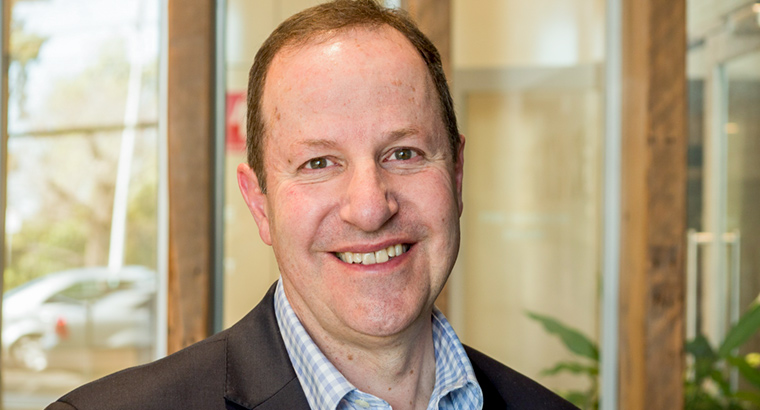News
Parliamentary inquiry calls for telehealth extension
A Senate Select Committee has agreed with the RACGP’s recommendation for telehealth to become a permanent feature of the healthcare system.
 The Committee said there is ‘overwhelming support’ for the expansion of telehealth services.
The Committee said there is ‘overwhelming support’ for the expansion of telehealth services.
The Senate Select Committee on Financial Technology and Regulatory Technology’s interim report, tabled on Wednesday 2 September, recommends extending Medicare-funded telehealth services beyond the pandemic as a means of ‘increasing patient choice and control over their health services’.
‘The Committee received overwhelming support for the expansion of the availability of telehealth services by general practitioners and other medical specialists during COVID-19, hearing that it has been transformational to the health system both in responding to the pandemic and for the future,’ the report states.
‘Telehealth has been embraced by patients and doctors alike. The benefits extend beyond cost savings to improving patient outcomes and ensuring access in non-metropolitan areas.
‘The Committee emphasises in particular that access to telehealth services has been critically important to Australians in rural, regional and remote areas during the pandemic. It is vital that the needs of rural Australians continue to be addressed through the use of appropriate telehealth services into the future.’
Deputy Chair of the RACGP Expert Committee – Practice Technology and Management (REC–PTM) Dr Steven Kaye, who contributed to the RACGP’s submission to the inquiry, welcomed the news.
‘It [would be] a wonderful step forward into the 21st century for Medicare to allow universal access to telehealth communication in various forms,’ he told newsGP.
‘There’s clearly a fantastic benefit for a substantial subsection of the community, be they vulnerable patients, be they unwell patients, be they immobile patients or be they patients in remote circumstances where they can’t physically attend the surgery or the doctor can’t physically attend their location in order to provide care.’
The Committee notes, however, that any permanent changes to telehealth must not result in ‘a diminishing of the availability of face-to-face GP services’ and that patients who wish to access health services in person ‘should be enabled to do so wherever possible’.
Dr Kaye agrees.
‘Non-face-to-face consultations, in whatever form, will not replace face-to-face consultations,’ he said.
‘Patients, by and large, are very poor at describing their location of pain, and so the examination of the patient is a critical part of our assessment process and we can’t just remove that and expect to have the same outcomes.
‘So we must continue seeing patients face-to-face to continue to provide the wonderful standard of care that we do in Australia.’
As part of telehealth extension, the RACGP called for the mandatory requirement of bulk-billing GP telehealth services for certain patient cohorts to be lifted, so that practices can apply their usual billing practices.
‘The RACGP has received numerous enquiries from concerned GPs and practice staff who have described this decision as inequitable and detrimental to the viability of their practices, impacting their ability to provide care for their patients,’ the submission states.
‘During these challenging times, GPs should be trusted to apply their usual billing practices and exercise discretion where necessary [eg if patients are clearly unable to afford a gap fee].’
Peta Rutherford, CEO of the Rural Doctors Association of Australia, shares the sentiment. She said any long-term model of telehealth should not ‘put at harm the viability of those general practices in those small communities’ as the impacts would be felt by the hospital service.

Dr Steven Kaye said universal telehealth access would be a ‘wonderful step’ into the 21st century.
The RACGP’s request is in line with other medical specialists and allied health professionals, who were granted permission to privately bill all COVID-19 telehealth consultations as of 20 April.
‘The mixed model of billing that we have in Australia has stood as a beacon of common sense amongst Western nations,’ Dr Kaye said.
‘Allowing the market force to determine whether a patient is billed privately or the Medicare subsidy accepted as the billing remuneration, with of course lots of room to move for the doctor and the patient to seek the most appropriate billing outcomes.’
The Committee also recommends that the Federal Government continue to work ‘as quickly as possible’ to implement ePrescriptions (electronic prescribing) and ensure ‘an open and accessible market’.
‘As with telehealth services, it is important that the rollout of ePrescriptions is an enabler of patient choice and convenience, and does not result in reduced services available in-person at pharmacies,’ the report states.
To ensure the service is successfully rolled out, the RACGP called for a national approach, having identified issues around the implementation of the temporary workaround system in response to the pandemic as a result of inconsistencies in state and territory legislation.
To ensure general practices and pharmacies are able to adequately prepare for and adapt to any changes, the college recommended that the implementation of electronic prescribing be undertaken in ‘a measured and planned way’.
‘Electronic prescribing is a magnificent addition to the repertoire for GPs and other doctors to allow a very accurate, secure and safe transfer of medications being prescribed and dispensed,’ Dr Kaye said.
‘So the uptake of that needs to have no barriers, including financial barriers. There needs to be no extra cost imposed onto the doctors prescribing, and that’s with a particular note of the four cent charge for SMS communication that’s coming in.
‘There [also] needs to be encouragement for all patients to utilise this very safe form of medication prescriptions.’
Dr Kaye believes the telehealth model so far has highlighted the value of the doctor–patient relationship.
‘When there’s a strong doctor–patient relationship – so the doctor knows the patient, the patient knows the doctor – the telehealth consultation will be much safer, much smoother and much more beneficial for the patient’s care,’ he said.
‘Over the last 30 or 40 years we’ve had the influx of revolving door bulk-billing services across the country, which offer limited engagement and development of that intimate patient care profile.
‘We need to be very careful that the erosion of the doctor–patient relationship stops, [and] in fact reverses.’
Given the rapid expansion of telehealth, the RACGP called on the Government to provide funding for research into the efficacy of care delivered via phone and video, including:
- effective models to ensure the provision of high-quality care via telehealth for the treatment and management of a range of health conditions
- the impacts of a large-scale adoption of telehealth on general practices (during and post pandemic) to assist with the allocation of future funding
- the role of telehealth in different contexts, including Aboriginal and Torres Strait Islander primary healthcare
The committee, chaired by Liberal Senator Andrew Bragg, received more than 200 written submissions and expects to release a final report in April 2021.
‘As Australia faces its first recession in 30 years, it’s clear we need more jobs and the only way to do that is to embrace technology and become globally competitive,’ Senator Bragg said.
‘It is my hope this interim report can be seen as a series of quick wins: new jobs and more choice.’
Log in below to join the conversation.
coronavirus COVID-19 telehealth
newsGP weekly poll
How often do patients ask you about weight-loss medications such as semaglutide or tirzepatide?